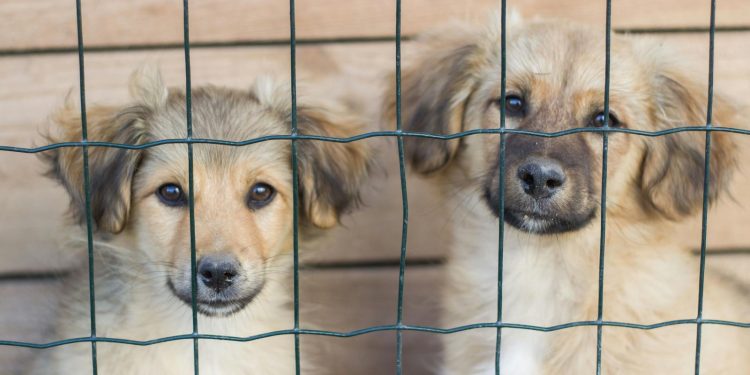Feeding your pet the right amount of food is crucial for their overall health and well-being. Overfeeding can lead to obesity, diabetes, and joint problems, while underfeeding can result in malnutrition and a weakened immune system. Finding the right balance requires careful attention to your pet’s individual needs, including their size, age, breed, and activity level. Whether you have a dog, cat, or another type of pet, here are some expert tips to help you determine how much food your pet needs and how to keep them happy and healthy.
1. Understand Your Pet’s Nutritional Requirements
Before you can determine the right amount of food for your pet, it’s important to understand their specific nutritional needs. Dogs and cats have different dietary requirements, and these can also vary based on their age, breed, and lifestyle. For instance, puppies and kittens require more calories and nutrients to support their growth, while adult pets need a balanced diet to maintain their weight. Senior pets may need fewer calories but more joint-supporting nutrients like glucosamine and omega-3 fatty acids. Consult your veterinarian to get an understanding of your pet’s specific nutritional requirements so you can make informed decisions about their diet.
2. Read the Pet Food Labels
Pet food labels provide crucial information that can help you determine the appropriate serving size for your pet. Most commercial pet foods include feeding guidelines on the packaging based on your pet’s weight. However, these are often just a starting point and may need to be adjusted based on your pet’s unique needs. When choosing a pet food, look for high-quality ingredients and avoid products with unnecessary fillers or artificial additives. The label will also indicate the calorie content, which is important for understanding how much energy your pet is getting from their food.
3. Measure Your Pet’s Food Accurately
One of the simplest yet most effective ways to ensure you’re feeding your pet the right amount is to measure their food accurately. It’s easy to overestimate portions when using an unmarked scoop or just eyeballing it. Use a standard measuring cup or a kitchen scale to make sure you’re giving your pet the right portion every time. Consistency is key—measuring your pet’s food ensures they are getting the same amount each day, helping prevent unintended weight gain or loss.
4. Adjust for Activity Level
Your pet’s activity level plays a significant role in determining how much food they need. A highly active dog that spends hours playing or exercising will require more calories than a dog that spends most of their time resting indoors. Similarly, an indoor cat may not need as many calories as an outdoor cat that spends its days climbing and hunting. Monitor your pet’s energy levels and adjust their portions accordingly. Keep in mind that pets that are spayed or neutered may also have lower energy requirements and may need slightly less food to maintain a healthy weight.
5. Monitor Your Pet’s Body Condition
One of the best ways to determine if you’re feeding your pet the right amount is to assess their body condition regularly. You should be able to feel your pet’s ribs without pressing too hard, but they shouldn’t be overly visible. Your pet should also have a visible waistline when viewed from above. If your pet starts to look too round or you’re unable to feel their ribs, it may be time to reduce their portions. Conversely, if your pet appears too thin or lethargic, they may need more food. Regularly evaluating your pet’s body condition is an effective way to ensure they’re maintaining a healthy weight.
6. Consider Feeding Frequency
The frequency with which you feed your pet can also impact their overall health. For dogs, most adult pets do well with two meals a day—one in the morning and one in the evening. Puppies, on the other hand, often require three to four smaller meals throughout the day to support their growth and energy needs. Cats generally do well with either two set meals a day or free-feeding, depending on their personality and dietary requirements. If you opt for free-feeding, be sure to measure out the daily amount to prevent overeating. Dividing your pet’s daily portion into smaller, more frequent meals can help prevent hunger and keep their metabolism stable.
7. Avoid Table Scraps and Over-Treating
Feeding your pet table scraps or too many treats can quickly lead to overfeeding and weight gain. Human food is often high in fat and calories, which can be unhealthy for pets. Instead of feeding scraps, stick to healthy, pet-safe treats, and limit treats to no more than 10% of your pet’s daily caloric intake. Use treats as rewards during training or for positive reinforcement, but be mindful of the amount. Remember that treats are not a substitute for a balanced diet, and they should be given sparingly to avoid unbalancing your pet’s nutrition.
8. Work with Your Veterinarian
Your veterinarian is an excellent resource for determining how much to feed your pet and which type of food is best for them. Regular veterinary check-ups are an opportunity to discuss your pet’s diet, track their weight, and adjust their food portions as needed. Your vet can help you create a feeding plan that meets your pet’s specific needs, taking into account any health issues, allergies, or special requirements. If your pet needs to lose or gain weight, your veterinarian can guide you through the process safely and effectively.
9. Use Puzzle Feeders for Mental Stimulation
In addition to providing the right amount of food, how you feed your pet can also impact their overall well-being. Puzzle feeders and slow-feeding bowls are great tools to help manage your pet’s weight while also providing mental stimulation. These feeders make mealtime more engaging and prevent your pet from eating too quickly, which can lead to digestive issues. Slower eating also helps your pet feel full longer, reducing the chances of overeating. Puzzle feeders are particularly helpful for indoor cats, as they can help mimic natural hunting behaviors, providing both physical and mental enrichment.
10. Monitor Weight Changes Over Time
Keeping track of your pet’s weight is essential for ensuring they remain healthy. Weigh your pet regularly, either at home or during vet visits, and make note of any changes. Sudden weight gain or loss can be an early sign of health problems and should be addressed with your veterinarian. Consistently monitoring your pet’s weight helps you catch any potential issues early and make adjustments to their diet as needed. Maintaining a healthy weight is one of the most important things you can do to support your pet’s overall health and longevity.
Finding Balance for a Healthy Life
Feeding your pet the right amount is an essential part of responsible pet ownership. By understanding your pet’s unique nutritional needs, measuring portions accurately, and monitoring their weight and body condition, you can help ensure your pet stays healthy and happy. It’s not just about the quantity of food, but also the quality and how you incorporate feeding into your pet’s daily routine. With these expert tips, you can feel confident that you’re providing the best possible nutrition for your beloved companion, leading to a longer, healthier life together.









Discussion about this post